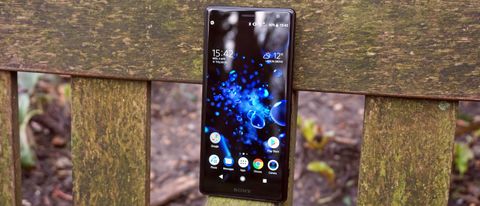Why you can trust TechRadar
Camera
- Solid daylight snapper, but not as good as rivals in low light
- 4K HDR recording is nice, but niche
The Sony Xperia XZ2 features a new 19MP Motion Eye camera, focused on top-notch photography and 4K video recording – and it’s got its work cut out, with the iPhone X, Samsung Galaxy S9 and Huawei P20 Pro significantly raising the smartphone photography bar in recent months.
Sony has once again employed smarts from its photography division, with the Xperia XZ2 boasting a Sony G Lens , Exmor RS sensor for mobile and Bionz mobile image processor.
It also inherits features such as predictive capture and autofocus burst from the XZ1 range, improving low-light shots, keeping moving targets in focus and making sure you don’t miss a smile.
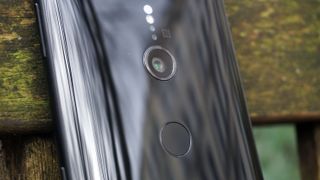
The Sony Xperia XZ2 has some serious camera credentials then, and it also adds 4K HDR video and Full HD super-slow-motion (960fps) recording to its arsenal.
The 4K video recording option is now found in a more logical place in the camera app – slide across to video mode and then hit the settings icon to change the resolution (the default is Full HD).
Previously, you had to slide across to the ‘camera apps’ section to get to 4K video recording, which was rather counter-intuitive, so it’s good to see Sony learning from its mistakes here.
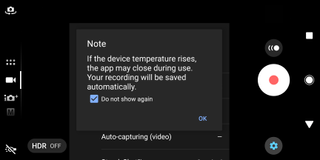
Select 4K video recording, however, and you get a message on screen warning you that the performance of the handset may be affected by shooting at this high resolution, and that the camera app may close if the handset becomes too hot.
This is an issue that has plagued 4K recording on Sony phones for years, and it appears the gremlins aren’t fully worked out. The handset does get rather warm after a couple of minutes of recording in 4K, and the on-screen image doesn’t manage to hit the same framerate, making for a less than smooth experience.
The good news is the final video won’t experience any of this lag, it’s simply the Xperia XZ2 struggling to keep up with the high-quality stream.
To fully appreciate your handiwork you’ll need a 4K HDR screen to watch it on – something the XZ2 doesn’t have. As the screen does support HDR, playback still looks great on the handset – it looks even better on a big screen though.
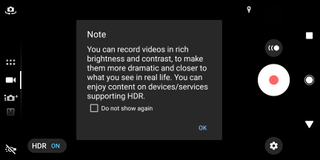
Moving to the stills photography side of things, and the intelligent auto mode on the Xperia XZ2 provides a great camera experience for point-and-shoot enthusiasts who just want to take good pictures at the touch of a button without having to tinker.
The 19MP rear camera is capable of capturing a high level of detail and color in good light, although move indoors or into darker scenes and it can be found wanting, with some images lacking clarity and appearing noisy.
Something else we encountered was a noticeable lag between taking a snap and it being saved to the camera roll – we were left waiting for half a second or so before the thumbnail of our last shot updated in the app.
Considering the power under the hood of the Xperia XZ2 the delay is surprising, especially when compared to its flagship counterparts, which boast more responsive apps.
Like most top-end phones these days, the Sony Xperia XZ2 also offers a Bokeh mode, allowing you to capture images with a pleasantly blurred background. It’s not immediately clear how to enable this mode though.

You need to swipe across to the camera apps section and then tap Bokeh. As the XZ2 only has a single camera with a fixed aperture it relies on software to create the blur, and this means that after taking a photo you can adjust the level of blur applied to it.
It’s nice to have this granular control over your image, although we found that the Xperia XZ2 wasn’t always great at distinguishing our foreground subject from the background, which led to some less than perfect blurs at times.
For those wanting more control over the whole photography experience on the Xperia XZ2, the camera app offers a manual mode as well. Here you can adjust ISO, exposure, focus, shutter speed and white balance, while also toggling HDR on and off.
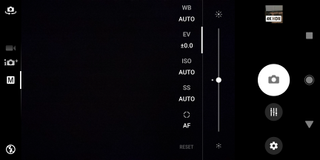
A word of warning: the XZ2 camera app is set to shoot at 16:9 (17MP) as default. If you want to make the most of the 19MP camera you’ll need to adjust the resolution to 4:3 (19MP).
Something the Xperia XZ2 has in its favor is a dedicated physical shutter key, which can make taking photos a lot easier than trying to tap the on-screen button. Selfie-lovers will especially like this option, and Sony is really the only mainstream smartphone manufacturer that continues to offer this level of dedication.
With other manufacturers incorporating triggers to launch the camera app and take photos into the volume and power keys it might seem a little redundant these days, but it’s something we found ourselves using a lot.
Another area where the Sony Xperia XZ2 trumps the competition is super-slow-motion video. It’s no longer the only phone offering 960fps (frames per second) recording – Samsung introduced it on the Galaxy S9 and S9 Plus – but it is the only one to offer it in Full HD.

We’ve been impressed with Sony’s slow-mo chops in the past, and while they’re just as impressive here the interface is still a little clunky.
Unlike Samsung’s smart capture, which can detect motion and automatically start recording, it’s a completely manual setup on the Xperia XZ2, and you’ll need to have cat-like reactions to capture the right moment in time to slow down. It only really works well in daylight too, with indoor slow-mo shots struggling for clarity..
Time it right and you can get a super super-slow-mo shot – but it’ll take some practice.
Camera samples










John joined TechRadar over a decade ago as Staff Writer for Phones, and over the years has built up a vast knowledge of the tech industry. He's interviewed CEOs from some of the world's biggest tech firms, visited their HQs and has appeared on live TV and radio, including Sky News, BBC News, BBC World News, Al Jazeera, LBC and BBC Radio 4. Originally specializing in phones, tablets and wearables, John is now TechRadar's resident automotive expert, reviewing the latest and greatest EVs and PHEVs on the market. John also looks after the day-to-day running of the site.
